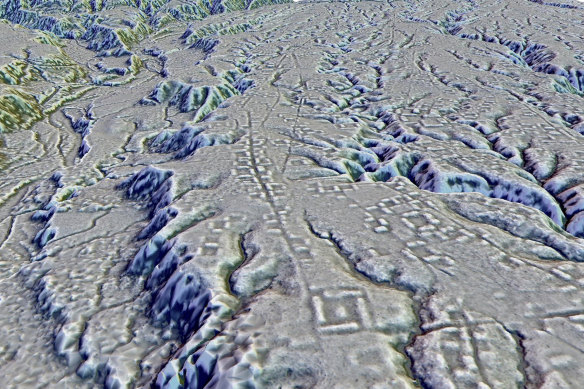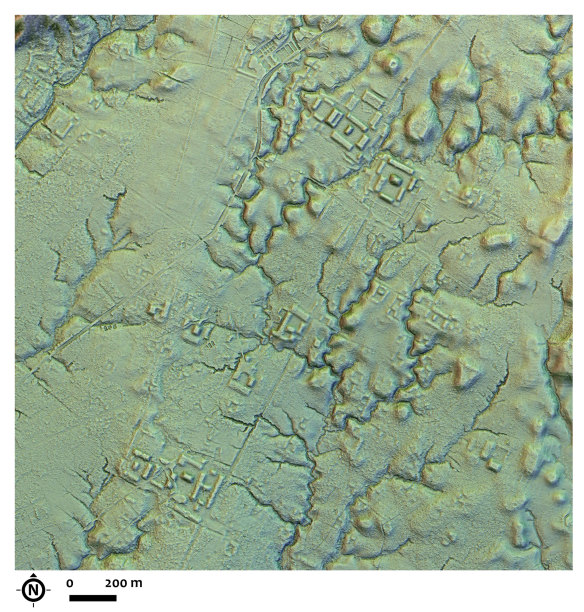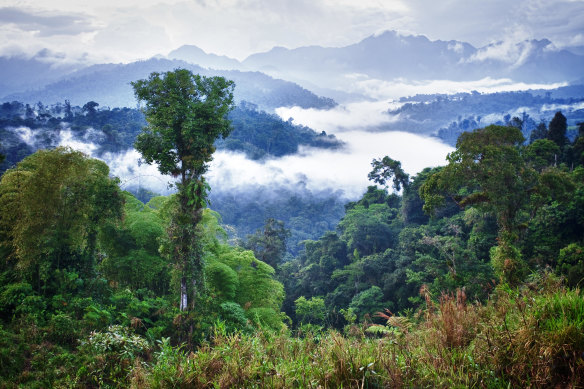This was published 1 year ago
Ancient cities to rival the Romans emerge in Amazon rainforest
By Simeon Tegel
Scientists have discovered the remains of a sprawling network of mysterious ancient cities in the Amazon that may revolutionise our understanding of human civilisation in the world’s largest tropical rainforest.
A little-known culture built arrow-straight roads and canals through thick jungle to connect urban settlements where they ate sweet potatoes and drank beer, excavations have revealed.

Archaeologists have uncovered complexes of rectangular platforms arranged around low squares and along wide dug streets at the Kunguints site, Upano Valley in Ecuador. Credit: AP
The settlements, resembling the “garden cities” of the Maya people and dating from around 500BC, are the largest and oldest of their type, suggesting the mysterious Upano people predated the Maya, Incas and Aztecs in the pre-colonial Americas.
Although the civilisation’s high point would have been broadly contemporaneous with the Roman Empire, construction of the earliest buildings appears to have begun around 2500 years ago. That makes the site roughly 1000 years older than the previous earliest known city in the Amazon.
Estimates of the number of residents range from the tens to the hundreds of thousands.
“This is a major, very significant discovery,” says Dr José Iriarte, a professor at the University of Exeter and expert in Amazonian archaeology, who was not involved in the research.
“It shows a very complex, independent, idiosyncratic civilisation that may have been one of the most sophisticated in the Americas.”

Archaeologists have uncovered a cluster of lost cities in the Amazon rainforest that was home to at least 10,000 farmers about 2000 years ago, according to a paper published in the journal Science.Credit: AP
That perspective runs counter to scientists’ traditional view of human development in the Amazon.
It held that peoples there were hunter-gatherers or had small-scale agriculture but never developed into large, hierarchical societies like the Incas’ vast Andean empire, the Maya’s powerful city states in Central America or the Aztecs’ territorial domination of much of what is Mexico today.
The reason for that interpretation is partly that organic remains, from food to clothing, rot rapidly in the jungle’s hot, humid conditions, leaving little or no trace for modern scientists to uncover.
And there is no stone in the Amazon with which to build, unlike the “monumental” cultures of the Andes and Mesoamerica, who left stunning archaeological remains, from Machu Picchu to the Aztecs’ huge pyramids.

Dense jungle in the Ecuador part of the Amazon rainforest.Credit: Alamy
The newly unveiled settlements include five large cities and 10 smaller ones spread out over 300 square kilometres in Ecuador’s Upano Valley, an area of cloud forest where the jungle overlaps with the Andean foothills.
Features include hillside terraces, rectangular agricultural fields with irrigation ditches and an elaborate system of straight roads and canals – all indications of urban planning in a centralised, complex society.
The largest settlement, known as Kilamope, at the centre of the site, is similar in size to the Giza Plateau, home to several of Egypt’s most spectacular pyramids and the Great Sphinx.
Food remains appear to show that the inhabitants cultivated crops including corn, sweet potato and cassava, according to the research published in Science by a team from France’s National Centre for Scientific Research.
Ceramics have also been discovered that show that they drank chicha, a sweet corn beer that is still the preferred tipple among many indigenous communities across Latin America today.
The discovery was made using lidar, a laser mapping technology. Flying in light aircraft over the site, the team led by Professor Stephen Rostain, was able to peer through the vegetation and create a detailed 3D image of the area, revealing everything from houses to roads, some nine metres wide and kilometres long, currently hidden beneath the undergrowth.
Other ancient Amazonian cities have been discovered in recent years in Bolivia and Brazil. But, says Iriarte, the scale, dates and unique cultural traits of the Upano Valley settlements suggest that there may have been numerous other complex civilisations across the Amazon Basin, whose remains are also waiting to be discovered.
The Telegraph, London
Get a note direct from our foreign correspondents on what’s making headlines around the world. Sign up for the weekly What in the World newsletter here.